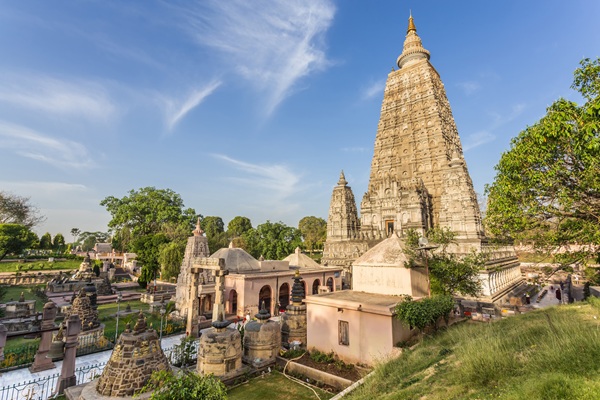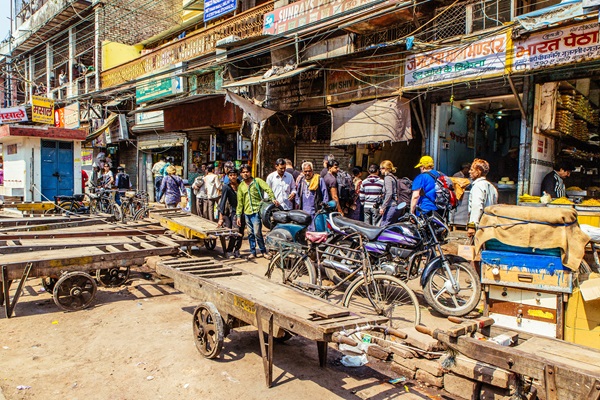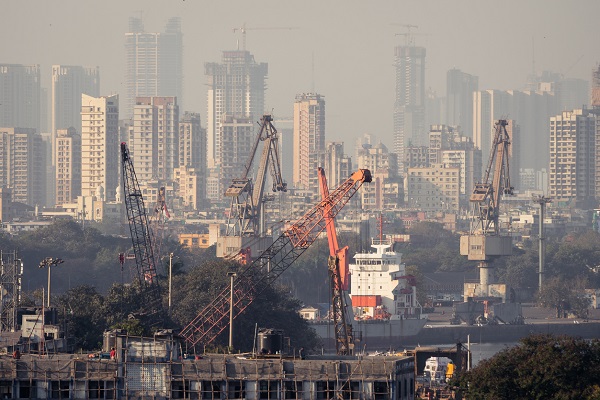.png)
By Amitabh Tiwari
Amitabh Tiwari, formerly a corporate and investment banker, now follows his passion for politics and elections, startups and education. He is Founding Partner at VoteVibe.
October 9, 2025 at 10:33 AM IST
Bihar's political landscape has always been a complex tapestry of caste equations, regional aspirations, and developmental promises. However, the current electoral battle has crystallised into a fascinating contest between two distinct interpretations of "MY"—Mahila/Yuva (Women/Youth) and Muslim/Yadav.
The Numbers Game: Understanding Bihar's Demographics
The electoral mathematics of Bihar presents a compelling puzzle. Women constitute approximately 47% of the voters, while youth aged 18-29 represent about 25% of the electorate. On the other side, Muslims and Yadavs together form roughly 32% of Bihar's population, a formidable voting bloc that has historically shaped electoral outcomes.
Turnout across last five state elections
|
2005 (Feb) |
2005 (Oct) |
2010 |
2015 |
2020 |
|
|
Male |
49.9% |
47.0% |
51.1% |
53.3% |
54.4% |
|
Female |
42.5% |
44.4% |
54.4% |
60.5% |
59.7% |
|
Excess of Female turnout over Male |
(7.4%) |
(2.6%) |
3.3% |
7.2% |
5.3% |
Source: ECI
Note: March 2005 polls threw a hung assembly and polls were held again in October.
Gender Based Voting Pattern
During 2005 polls when Rabri Devi was the incumbent chief minister, female turnout trailed that of male. However, from 2010 to 2020 women turnout has exceeded the men. This helped Nitish-led National Democratic Alliance win elections in 2010 and 2020. Even when Nitish Kumar’s JDU switched to Mahagathbandhan in 2015, women voters stayed loyal to him.
In the 2020 elections, of the 167 seats where women's turnout exceeded men's, the NDA secured 99 seats compared to 61 won by the MGB.
Nitish Kumar's Mahila Strategy: The Traditional Vote Bank
In 2020 polls, approximately 38% of women voted for the NDA compared to 36% for the MGB, a narrow but crucial advantage in an election where the vote difference was just 12,000 votes. To maintain and expand this support, the government has rolled out an ambitious Mukhyamantri Mahila Rozgar Yojana targeting women.
Over 12.1 million women have taken advantage of the scheme granting ₹10,000 seed capital to women for starting a business. This is roughly one-third of the entire female voter base. This isn't merely welfare; it's strategic political investment. By positioning himself as the guardian of women's interests and safety, Nitish has created a political identity that transcends traditional caste lines.
The bet is clear: if women continue to vote in higher numbers and maintain their preference for the NDA, they can offset the consolidation of other vote banks largely Muslim-Yadav.
The Youth Conundrum: Promise Meets Frustration
The youth demographic presents a more volatile picture. The highest level of anti-incumbency against the Nitish government across polls is exhibited by youth (57% as per Vote Vibe Bihar Tracker 3). The government has introduced schemes like the ₹1,000 unemployment allowance for two years for youth in the age of 20-25.
Unemployment remains Bihar's Achilles heel, and lack of creation of jobs is one of Nitish's biggest failures. Tejashwi received marginally higher youth support in 2020 due to his promise of creation of 1 million jobs if he comes to power. Here also gender difference was clearly visible, 6% lead amongst males, while parity with NDA amongst females.
However, this time around Prashant Kishor of Jan Suraj Party has also caught the imagination of youth and may garner about 15-20% votes. The challenge for the NDA is that anti-incumbency sentiment in youth may not be easily managed through welfare schemes. Young voters want opportunities, not handouts. This makes them the swing demographic that could determine electoral outcomes.
Youth Vote in 2020 Vidhan Sabha
|
Overall Youth (18-29) |
Male 18-29 |
Female 18-29 |
|
|
MGB |
37% |
39% |
39% |
|
NDA |
36% |
33% |
39% |
|
OTH |
27% |
28% |
22% |
Source: CSDS Post Poll
The MY Fortress vs The Polarisation Paradox
Voting Pattern of Social Groups in Vidhan & Lok Sabha
|
YADAV |
MUSLIM |
|||
|
2020 Vidhan Sabha |
2024 Lok Sabha |
202 Vidhan Sabha |
2024 Lok Sabha |
|
|
NDA |
10% |
26% |
7 |
12% |
|
MGB (INDIA bloc) |
75% |
73% |
75% |
87% |
|
OTH |
15% |
1% |
20% |
1% |
Source: CSDS Post Poll Reports
However, this fortress faces challenges from multiple directions. Leaders like Asaduddin Owaisi of the All India Majlis-e-Ittehadul Muslimeen and Prashant Kishor are attempting to create fissures in this bloc. Owaisi won five seats in Seemanchal with 46% Muslim population in 2020, damaging MGB’s prospects.
Owaisi particularly targets Muslim voters who feel their community hasn’t got enough tickets despite its loyalty to the MGB, only 12.5% tickets versus 17.7% population. The demand for greater representation reflects genuine grievances and gets resonance. Despite Muslims constituting 18% of Bihar's population, they hold only 8% of MLA seats.
One of the most complex aspects of Bihar's battle is the polarisation dynamic. When Muslim-Yadav consolidation becomes too visible or aggressive, it often triggers counter-polarisation among other communities. In Seemanchal, which has 46% Muslim population, NDA won half of the 24 seats due to intense counter consolidation.
Can NDA neutralise MGB's MY advantage? Can MGB create a new MYY bloc?
The critical question facing Bihar's politics is whether the NDA can successfully woo segments of the Muslim-Yadav bloc— young, educated, liberal, women and Pasmandas — and neutralise the MGB's traditional advantage. It hopes to woo a section of MY women through the ₹10,000 seed capital scheme and convert them into silent voters.
The NDA aims to counter this bloc through its Mahila-Yuva formula hoping women continue their higher turnout and maintain their preference for Nitish Kumar's governance model because of schemes and better law and order. NDA also hopes a section of youth voters can be convinced through unemployment doles, promise of creation of 10 million jobs as well as narrative of stability.
The strategy would be to prevent youth from voting along lines of age identity and instead vote on caste/religious lines or as beneficiaries or on development where it boasts of a good record. However, it's not an easy task. On the other hand, MGB hopes to create the MYY combination, Muslim-Yadav-Yuva, and if this solidly backs Tejashwi, INDIA bloc can pose a serious challenge.




